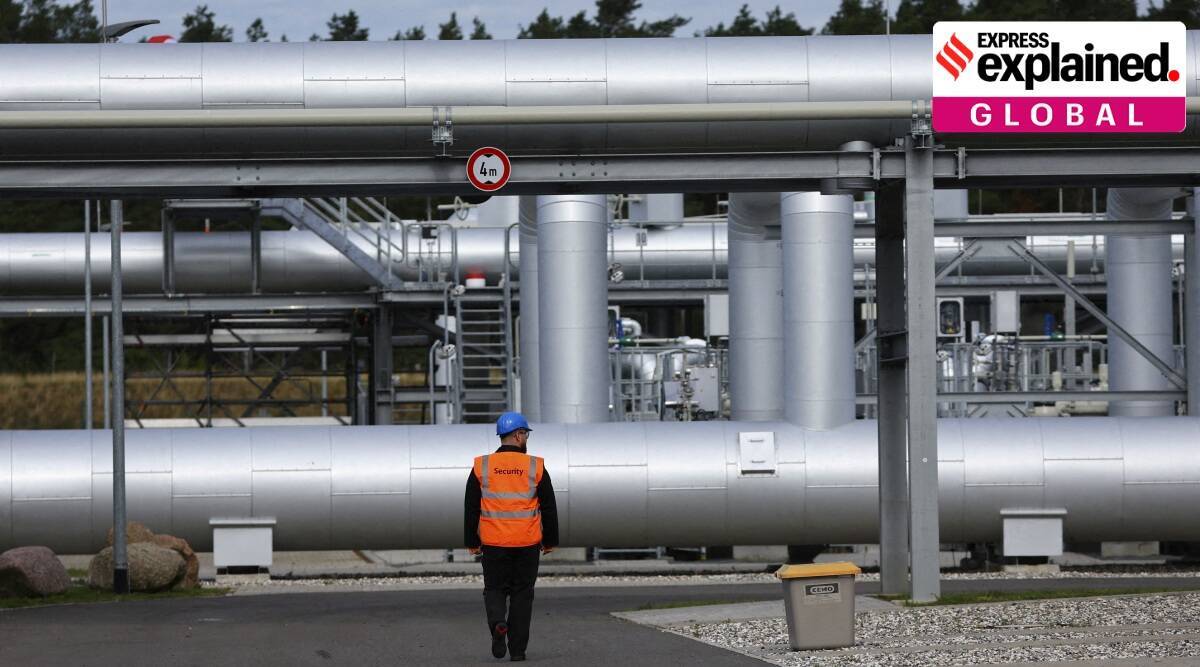News Highlights:
- According to a veteran American investigative journalist, the White House ordered the Central Intelligence Agency (CIA) to carry out a covert operation in September 2022 to blast the underground Nord Stream gas pipelines.
- The report claimed that US Navy divers, operating under cover of a mid-summer 2022 NATO exercise, planted remotely triggered bombs to destroy three of the four Nord Stream pipelines.
Key Takeaway:
- Last September, a series of leaks were reported in the Nord Stream and Nord Stream 2 pipelines, multi-billion dollar projects to carry natural gas from Russia to Germany through the Baltic Sea.
- Both Sweden and Denmark, whose jurisdiction the leaks happened, concluded following an investigation that someone intentionally bombed the pipelines to create the leaks.

Nord Stream pipelines:
- About:
- Nord Stream is a network of offshore natural gas pipelines in Europe which run under the Baltic Sea from Russia to Germany.
- It comprises two separate projects consisting of two pipelines, which have two lines each:
- Nord Stream 1 was completed in 2011 and runs from Vyborg in Leningrad (Russia) to Lubmin near Greifswald, Germany.
- Nord Stream 2, which runs from Ust-Luga in Leningrad to Lubmin, was completed in September 2021 and has the capacity to handle 55 billion cubic meters of gas per year once it becomes operational.
- For at least 50 years, the twin pipelines can deliver 110 billion cubic metres (bcm) of gas to Europe annually.
- The Nord Stream crosses the Exclusive Economic Zones (EEZs) of several countries, including Russia, Finland, Sweden, Denmark and Germany, and the territorial waters of Russia, Denmark, and Germany.
- In Germany, the pipeline connects to the OPAL (Baltic Sea Pipeline) and NEL (North European Pipeline), which further connects to the European grid.
- Significance:
- Russia has the greatest known natural gas reserves, and oil and gas sales account for over 40% of its annual budget.
- Nord Stream 2 eliminates the risks related to sending gas through transit countries, cuts operating costs by doing away with transit fees and gives direct access to its most important European customer, Germany.
- It increases Europe’s dependence on Russia (around 40% of its gas comes from Russia) while giving it a reliable customer.
- Germany is Russia’s biggest European gas consumer, and most of it comes through the Nord Stream.
- This gas is used for heating homes, factories, and offices in the harsh, long European winters and also for power generation.
- Further, Germany’s transition to cleaner fuels by phasing out nuclear power and cutting reliance on coal has increased its dependence on Russian gas.
- Russia has been accused of leveraging Europe’s dependency on its energy as retaliation against the Western sanctions imposed on it since the Ukraine war began.
- Impact of the leaks:
- The pipelines are unlikely to provide any gas to Europe in the forthcoming winter months
- Economic impact: European gas prices spiked after reports of the leaks emerged
- It may raise the cost of natural gas (already at its peak) for India, and LPG/CNG consumers in India may have to bear the brunt.
- Environmental impact: The pipelines are passing on oceans; the leak might adversely impact marine organisms.
- Methane is a large component of natural gas and is also a potent greenhouse gas.
- It is the second-largest contributor to climate change after CO2.
Pic Courtesy: The Indian Express
Content Source: The Indian Express



